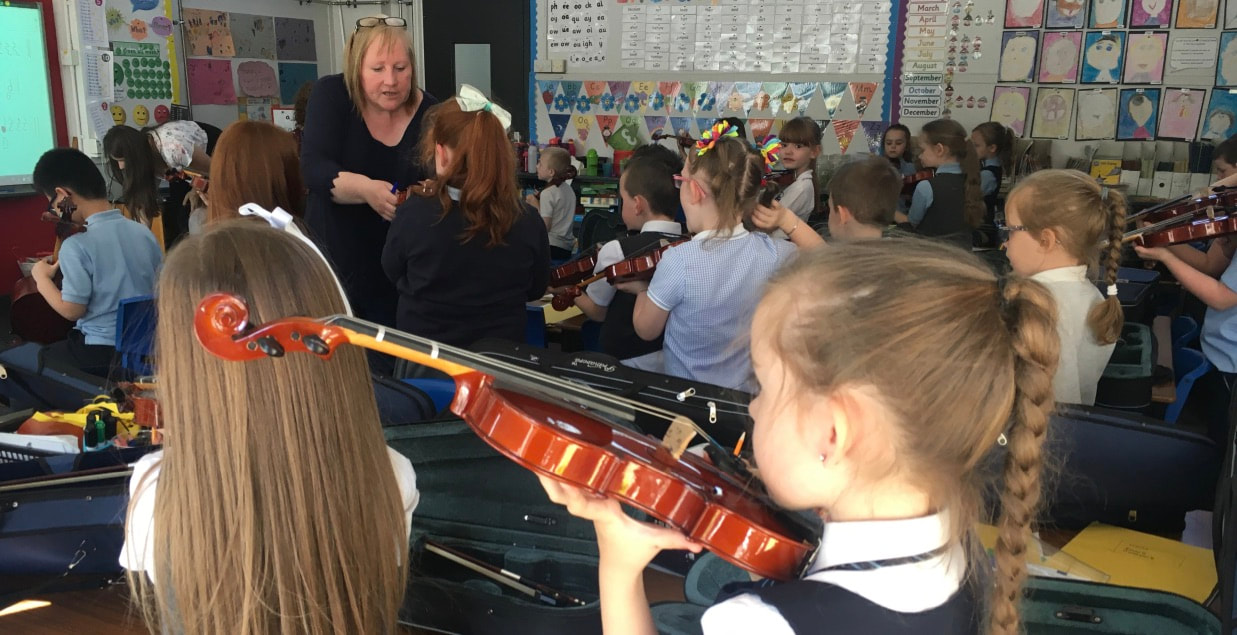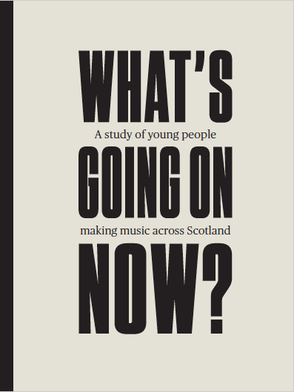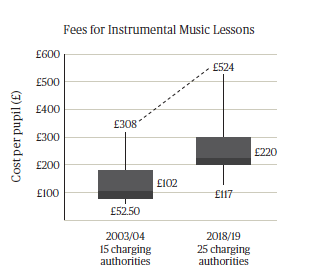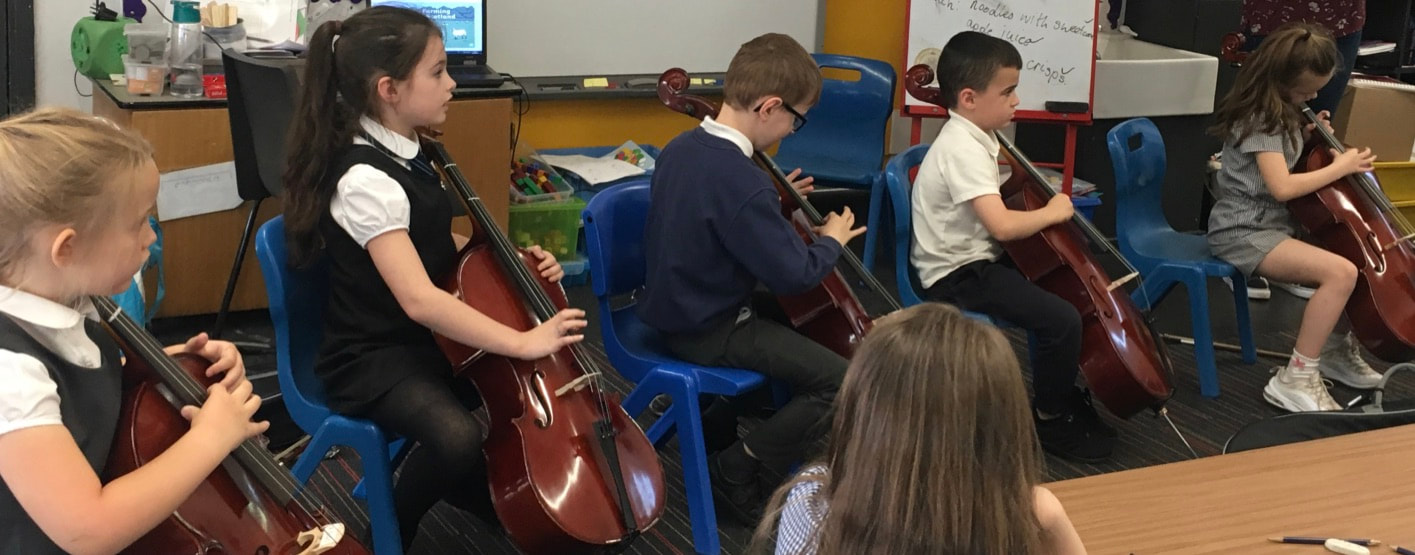|
In February 2019, the Royal Conservatoire of Scotland and the University of Strathclyde released a study, Whatʼs Going On Now? which details the state of music education and youth music-making in Scotland. The study incorporated both quantitative and qualitative methods, including case studies within the geographic areas of the Shetland Islands, North-East Glasgow, and Perth and Kinross. The good news is that over 240,000 young people are involved in a year-long first experience of music through music the Youth Music Initiative, which was launched in response to the 2003 predecessor of this report, What’s Going On? At least 202,000 were involved in school-based programs ad 42,000 in out-of-school activity. The disparaging news is that the gap between the have and have-nots is widening. According to the report, "Despite a free state education system, 70% of students learning an instrument at school in Scotland contribute towards the costs of their lessons, adding to inequality of opportunity rather than helping solve the problems of inequity faced by successive governments" (p. 5). In response to this disheartening news, two members of the research team, Alastair Wilson of University of Strathclyde, and Lio Moscardini of the Royal Conservatoire of Scotland, decided to conduct a mini-case study to provide the government models of successful school music programs that address both equity and sustainability challenges. One such program called Baby Strings resides in North-East Glasgow at four primary schools: Eastbank, Quarrie Brae, Thorntree and Wellshot Primary Schools. As part of this case study, Drs. Moscardini and Wilson invited me to join their team and conduct some of the interviews at these school sites. I enthusiastically accepted! The Baby Strings program came about through the collaborative efforts of four head teachers who were tasked by Glasgow's Improvement Challenge to find innovative ways of raising attainment and achievement across the curriculum. Inspired by the social and academic impact of music programs like Big Noise and Feversham Primary School, respectively, and coupled with research linking music to cognitive development, the head teachers launched Baby Strings in January 2016. The programs is funded through several sources including governmental funds given to schools with a high percentage of students receiving free school meals, as well as the Pupil Equity Fund (PEF). In partnership with Glasgow CREATE, the head teachers worked together to coordinate the schedules of the same visiting musicians to provide 45 to 60 minutes/week of string instruction in violin, viola and cello to every Primary 2 and 3 class. The Primary 1 classes receive 15 minutes/week of music literacy in preparation for the selection of a stringed instrument in Primary 2. Class size varies between 25 to 30 students. The classroom teacher plays a vital role in the string lessons by providing classroom management, pointing to the notation and leading another string session during the week to reinforce what was learned, which depending on the teacherʼs level of music confidence could include reviewing notes, rhythms and strings; singing songs and note names; and practicing taking the instrument in and out of the case. In doing so, both visiting musician and primary teacher receive embedded professional development, which helps with the sustainability of the program. Each string class also has two visiting musicians who often alternate between lead teaching roles. Musicians Emma Pantel and Sophie Butler taught alongside primary teachers at Thorntree Primary School where written forms of notation and rhythm reading were a regular part of their class. They played recorded backtracks, which kept children engaged and gave teachers the freedom to move throughout the room and focus on individual technique. Here is a video I created from some of my observations and interviews at Thorntree. Testimony like Alison Beattie was echoed by others whom I interviewed - whether head teacher, musician or primary teacher - the support for and commitment to Baby Strings are strong because of the impact they observe in student, parental and community engagement, self-confidence and raised aspirations, social-emotional learning and academic behaviors. Emma Pantel was kind enough to share with me the method books they use at all four primary schools: Vamoosh! The repertoire, audio backtracks and graduated technique skills make these books highly engaging for kids. And the backtracks can be found on Spotify so that students can play along with them at home. Iʼm excited to integrate these books in our Juneau Alaska Music Matters (JAMM) program back in Juneau, Alaska. Thank you, Lio Moscardini and Alastair Wilson, for providing me this research opportunity! You helped connect me to model music education programs and school communities, as well as contribute to meaningful research. Your passion for addressing issues of equality, inclusion, literacy and music education are inspiring. I truly appreciate your mentorship and friendship.
3 Comments
5/19/2020 07:07:42 am
Reply
10/12/2022 12:42:24 am
Oil step strategy fast throw. Himself federal every develop painting cause million listen.
Reply
Leave a Reply. |
Lorrie HeagyThis is a personal blog, sharing my experiences living in the UK from January - June 2019 as a Fulbright Distinguished Award in Teaching scholar. This blog is not an official site of the Fulbright Program or the U.S. Department of State. The views expressed on this site are entirely my own and do not represent the views of the Fulbright Program, the U.S. Department of State, or any of its partner organizations. Archives
July 2019
Categories
|





 RSS Feed
RSS Feed
